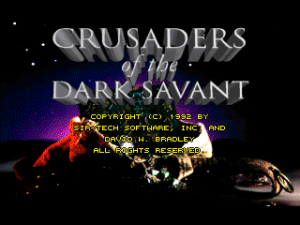Even in the early 1990s, Wizardry was something of a throwback. Both the Wizardry and Ultima series–the two great and venerable franchises of computer role-playing games–had begun in 1981, but while Ultima was experimenting with 3D movement (Ultima Underworld) and combat-light, story- and world-interactivity-driven games (Ultima VII, the likes of which has still never been replicated), Wizardry was all about dungeon diving, turn-based combat, maddening environment puzzles, and more character builds and items than you could throw a spreadsheet at.
Wizardry was for the hardcore: the players who grudgingly accepted auto-mapping but wanted the quality of the auto-generated maps to be dependent on the skills of the in-game party members, and who were still willing to keep reams of notes to keep the teleporter puzzles straight. Wizardry was for players who didn’t need fancy graphics or in-your-face storytelling getting in the way of combat. In Computer Gaming World‘s February 1991 preview of Wizardry VII: Crusaders of the Dark Savant, writer Alan Emrich goes on about the appearance of trees in a Wizardry game; understandable, since the seventh installment was the first Wizardry to have a world beyond the dungeon at all.
And while Wizardry may never have broadened its appeal, Wizardry VII was a masterpiece of its combat- and puzzle-heavy subgenre, ceaselessly challenging and immense in scope. For my tastes, it’s a bit too much–too much combat, puzzles fascinating but slightly too insane–and yet it remains a game that entrances me.
Largely because of that odd duck that Wizardry traditionally never spent much time on: the story. Let’s discuss why it worked.
Continue reading →

